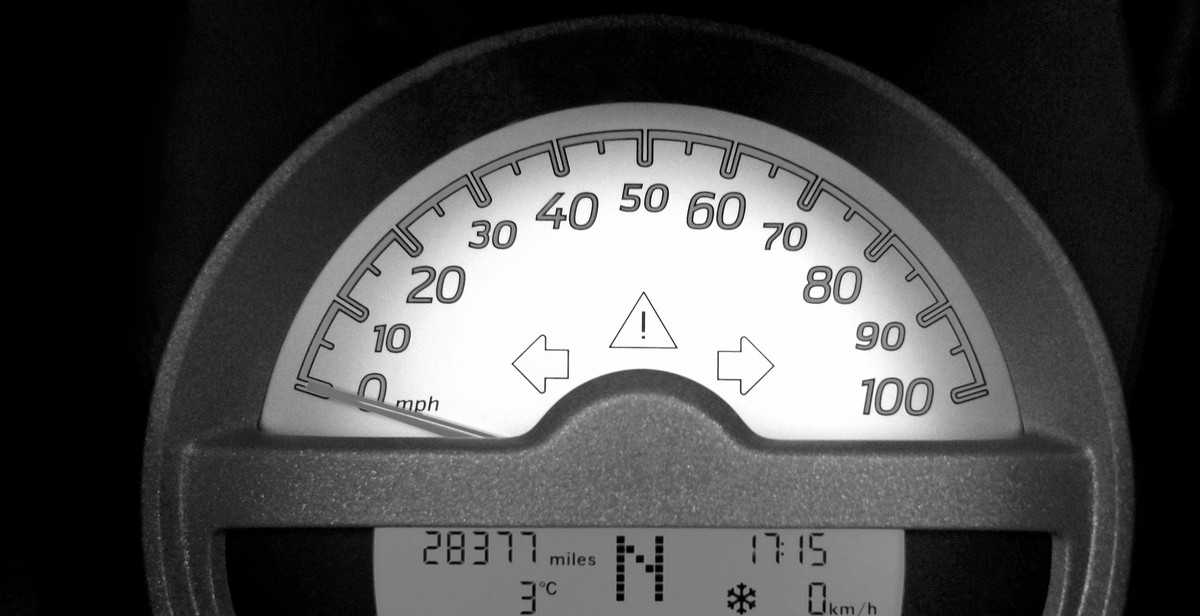Breaking Love’s Chains: How to Overcome Control and Dominance in Relationships
As a love and relationships psychology guru, I have seen firsthand the damage that control and dominance can do to a relationship. When one partner seeks to control the other, it creates an unhealthy power dynamic that can lead to resentment, lack of trust, and even abuse.
Control can manifest in many ways, from monitoring your partner’s every move to making all of the decisions in the relationship. Dominance can be more subtle, such as always having to be right or dismissing your partner’s feelings and opinions. These behaviors can be difficult to recognize, but they can have a profound impact on the health of your relationship.
The Impact of Control and Dominance
When one partner seeks to control the other, it can lead to a number of negative consequences. These can include:
- Resentment
- Lack of trust
- Isolation from friends and family
- Low self-esteem
- Depression and anxiety
- Physical and emotional abuse
In order to have a healthy and fulfilling relationship, it is important to recognize when control and dominance are present and take steps to overcome them. In this article, I will share my personal experience and provide practical advice on how to break free from love’s chains and build a stronger, more equal partnership.

Understanding Control and Dominance
Control and dominance are two common issues that can arise in romantic relationships. While some people may believe that control and dominance are signs of love or affection, they can actually be harmful and damaging to a relationship. Understanding the difference between healthy and unhealthy control, as well as the root causes of control and dominance, can help you overcome these issues in your own relationship.
The Difference Between Healthy and Unhealthy Control
Healthy control in a relationship involves setting boundaries and establishing mutual respect and trust. For example, if one partner is uncomfortable with their significant other spending time alone with an ex, setting a boundary around this issue can be healthy. This type of control is based on trust and open communication.
Unhealthy control, on the other hand, is based on fear and insecurity. It often involves one partner trying to exert power and control over the other, leading to feelings of resentment, anger, and frustration. Examples of unhealthy control can include monitoring your partner’s every move, making decisions without their input, or isolating them from friends and family.
The Root Causes of Control and Dominance
Control and dominance in relationships can stem from a variety of underlying issues, including past trauma, insecurity, and a need for power and control. For example, if someone has experienced abuse in the past, they may struggle with feelings of helplessness and seek to control their partner as a way to feel safe and secure.
Similarly, if someone has low self-esteem or feels insecure in their relationship, they may try to assert dominance as a way to feel more powerful and in control. This can lead to a toxic dynamic where one partner is constantly trying to dominate the other, leading to feelings of resentment and anger.
| Healthy Control | Unhealthy Control |
|---|---|
| Based on trust and open communication | Based on fear and insecurity |
| Involves setting boundaries and establishing mutual respect | Involves exerting power and control over the other |
| Respects individual autonomy and freedom | Disregards individual autonomy and freedom |
In conclusion, understanding the difference between healthy and unhealthy control, as well as the root causes of control and dominance, is crucial for overcoming these issues in your relationship. By establishing healthy boundaries, practicing open communication, and addressing underlying issues, you can build a stronger and more fulfilling relationship based on mutual respect and trust.

Recognizing the Signs of Control and Dominance
Control and dominance in a relationship can be hard to recognize, especially when emotions are involved. However, it’s important to be aware of the signs of control and dominance in a relationship so that you can take steps to overcome them. Here are some physical, emotional, and behavioral signs to look out for:
Physical Signs
Physical signs of control and dominance can include:
- Physical violence or threats of violence
- Restricting your movements or physically blocking you from leaving a room or area
- Controlling what you wear or how you present yourself
- Using physical force during sex
Emotional Signs
Emotional signs of control and dominance can include:
- Constant criticism or belittling
- Blaming you for everything that goes wrong in the relationship
- Isolating you from friends and family
- Threatening to harm themselves if you leave the relationship
Behavioral Signs
Behavioral signs of control and dominance can include:
- Checking your phone or social media accounts without your permission
- Controlling your finances or limiting your access to money
- Dictating your daily schedule or activities
- Using jealousy or possessiveness to control your behavior
| Physical Signs | Emotional Signs | Behavioral Signs |
|---|---|---|
| Physical violence or threats of violence | Constant criticism or belittling | Checking your phone or social media accounts without your permission |
| Restricting your movements or physically blocking you from leaving a room or area | Blaming you for everything that goes wrong in the relationship | Controlling your finances or limiting your access to money |
| Controlling what you wear or how you present yourself | Isolating you from friends and family | Dictating your daily schedule or activities |
| Using physical force during sex | Threatening to harm themselves if you leave the relationship | Using jealousy or possessiveness to control your behavior |

The Negative Effects of Control and Dominance on Relationships
Control and dominance in relationships can have severe negative effects on both partners and the overall health of the relationship. Here are some of the most common negative effects:
Lack of Trust
When one partner is controlling and dominant, it can lead to a lack of trust in the relationship. The controlled partner may feel like they cannot trust their own judgment or decisions, leading to a breakdown in communication and a loss of intimacy. This can also lead to feelings of resentment and anger, further damaging the relationship.
Low Self-Esteem
Control and dominance can also have a significant impact on self-esteem. The controlled partner may begin to feel like they are not good enough or that they are constantly failing to meet their partner’s expectations. This can lead to feelings of inadequacy and a loss of self-confidence, which can spill over into other areas of their life.
Isolation
Control and dominance can also lead to isolation. The controlled partner may feel like they are not allowed to see friends or family or engage in activities without their partner’s approval. This can lead to a feeling of being trapped and alone, further damaging the relationship.
Stress and Anxiety
Being in a controlling and dominant relationship can be incredibly stressful and anxiety-inducing. The controlled partner may constantly feel like they are walking on eggshells, trying to avoid setting off their partner’s anger or disapproval. This can lead to chronic stress and anxiety, which can have a negative impact on their physical and mental health.
Overall, control and dominance in relationships can have severe negative effects on both partners. It’s important to recognize these effects and take steps to address them in order to build a healthy and fulfilling relationship.

Overcoming Control and Dominance in Relationships
As a love and relationships psychology guru, I have seen firsthand the damaging effects of control and dominance in relationships. Being in a relationship with someone who exhibits these behaviors can be emotionally and mentally exhausting. However, it is possible to overcome this problem and build a healthier relationship. Here are some tips:
Acknowledging the Problem
The first step in overcoming control and dominance in a relationship is acknowledging that it exists. This can be difficult, especially if you have been in the relationship for a long time and have become accustomed to the behavior. However, it is important to recognize that this behavior is not acceptable and can cause long-term harm to both partners.
Setting Boundaries
Setting boundaries is crucial in any relationship, but it is especially important when dealing with control and dominance. You need to communicate to your partner what behaviors are not acceptable and what consequences will follow if those boundaries are crossed. Be firm in your boundaries and stick to them, even if it means ending the relationship.
Seeking Professional Help
If the behavior continues despite your efforts, seeking professional help may be necessary. A therapist can help you and your partner work through the issues and develop healthier communication and relationship patterns. It is important to choose a therapist who has experience in dealing with control and dominance in relationships.
Focusing on Self-Care
Dealing with control and dominance in a relationship can be emotionally draining. It is important to focus on self-care and take time for yourself. This can include activities such as meditation, exercise, and spending time with supportive friends and family. Taking care of yourself will help you build the strength and resilience needed to overcome this problem.
Overcoming control and dominance in a relationship is not easy, but it is possible. By acknowledging the problem, setting boundaries, seeking professional help, and focusing on self-care, you can build a healthier and happier relationship.

Moving Forward to a Healthier Relationship
Breaking free from a controlling and dominant relationship is not an easy task, but it is possible. It takes a lot of courage, determination, and effort to move forward towards a healthier relationship. Here are some steps to help you rebuild a healthy, happy, and equal partnership:
Communication
Communication is the key to any successful relationship. It is important to openly and honestly discuss your feelings, needs, and concerns with your partner. Make sure to actively listen to your partner and validate their feelings as well. Avoid using blame, criticism, or defensiveness in your communication. Instead, focus on finding solutions and compromise that work for both of you.
Trust Building
Trust is essential in any relationship. It is important to be honest and transparent with your partner. Keep your promises and follow through with your commitments. Avoid keeping secrets or lying to your partner. Trust can take time to build, so be patient and consistent in your actions.
Respect for Boundaries
Respecting each other’s boundaries is crucial in a healthy relationship. Make sure to establish clear boundaries and communicate them effectively with your partner. Avoid crossing each other’s boundaries or violating each other’s privacy. Respect your partner’s individuality and allow them to have their own space and interests.
Equal Partnership
A healthy relationship is based on equality and mutual respect. Avoid any power struggles or attempts to control each other. Make decisions together and share responsibilities equally. Support each other’s goals and aspirations. Celebrate each other’s successes and work through challenges together.
| Steps to a Healthier Relationship |
|---|
| 1. Open and honest communication |
| 2. Building trust through honesty and transparency |
| 3. Respecting each other’s boundaries |
| 4. Establishing an equal partnership based on mutual respect |
Remember that it takes time and effort to build a healthy relationship. Be patient, kind, and supportive of each other. Seek professional help if needed and always prioritize your mental and emotional well-being.
